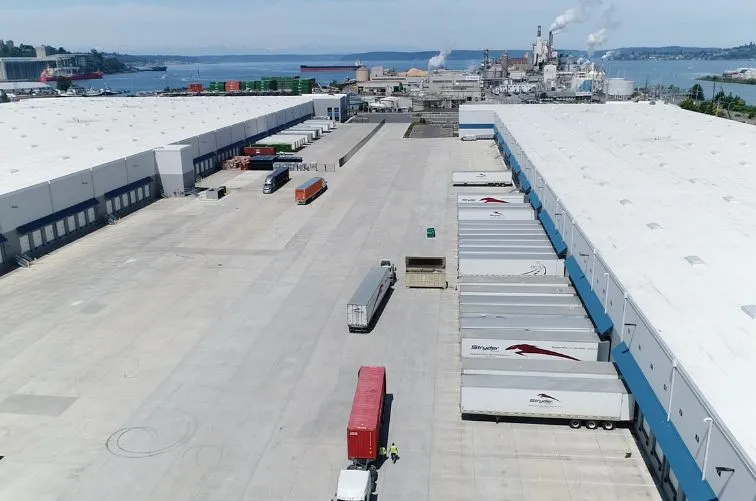Cross-docking vs transloading: What are the differences between them? The key differences between cross-docking and transloading are in storage time and transportation modes. Cross-docking involves minimal or no storage as goods move directly between inbound and outbound trucks, while transloading often includes temporary storage to facilitate the transfer of goods between multiple transportation modes, such as rail-to-truck or ship-to-rail.
Both processes are distinct strategies in logistics designed to develop efficient supply chain operations and improve the shipping process. While both are aimed at optimizing the movement of goods, their methods and use cases differ significantly.
Here are the key differences between cross-docking and transloading in-depth, and how Stryder Canada integrates cross-docking services in Metro Vancouver, as well as transloading, to deliver value to businesses throughout North America.
What Are Cross-Docking And Transloading?
Cross-Docking
Cross-docking is a logistics process where goods are transferred directly from inbound trucks or other transportation modes to outbound trucks or vehicles with minimal or no storage time. It eliminates long-term storage by moving products swiftly through a central docking station, allowing for faster deliveries and reduced handling costs. Cross-docking is particularly beneficial for perishable goods, high-demand products, and just-in-time delivery systems that require rapid distribution.
Transloading
Transloading is a logistics process which involves the unloading of goods from one mode of transportation and their reloading onto another mode. This process is common in multimodal and intermodal transportation, such as transferring cargo from railcars to trucks or shipping containers to rail. Unlike cross-docking, transloading often involves temporary storage as goods are reconfigured for their next mode of transport, making it ideal for international shipments and long-distance freight where multiple modes of transport are required.
Cross-Docking vs Transloading: 5 Key Differences
Difference 1: Storage Time
- Cross-Docking: Minimal or no storage time as goods are transferred directly from inbound trucks to outbound trucks or vehicles.
- Transloading: Temporary storage is often required as goods are reconfigured for the next mode of transportation.
Difference 2: Mode of Transportation
- Cross-Docking: Typically involves a single mode of transportation, such as truck-to-truck transfers at a central docking facility.
- Transloading: Involves multiple modes of transport, such as rail-to-truck or ship-to-rail, making it ideal for intermodal and multimodal logistics.
Difference 3: Process Complexity
- Cross-Docking: A straightforward process focused on efficient transfers with minimal handling.
- Transloading: More complex, often involving the reorganization of goods and coordination between different transportation modes.
Difference 4: Use Cases
- Cross-Docking: Cross-docking services are best for perishable goods, just-in-time delivery systems, and high-demand retail items requiring rapid distribution.
- Transloading: The transloading process is suitable for international shipments, bulk freight, and goods requiring long-distance transportation with mode changes.
Difference 5: Cost Implications
- Cross-Docking: Reduces costs associated with long-term storage and improves delivery times for time-sensitive shipments.
- Transloading: Offers flexibility for consolidating shipments and optimizing transportation costs over long distances.
These key differences highlight how businesses can choose between cross-docking and transloading based on their supply chain priorities, product types, and logistics requirements.
Cross-Docking & Transloading With Stryder Canada
Stryder Canada provides industry-leading cross-docking and transloading services to support businesses across North America. Our cross-docking facilities, such as the Vancouver Beverage Centre in Metro Vancouver, are designed to ensure goods move swiftly through the supply chain process, eliminating long-term storage and reducing handling steps. By coordinating seamless transfers between inbound and outbound trucks, we help businesses achieve faster shipping and lower transport costs.
For businesses requiring flexibility in their logistics operations, our transloading services are tailored to handle goods transitioning between modes of transportation. Whether transferring cargo from railcars to trucks or consolidating multiple shipments into a single delivery, Stryder Canada ensures an efficient transportation process.
Streamline your logistics with Stryder Canada’s expert cross-docking and transloading services. We move your goods faster with minimal storage and handle seamless transitions between transportation modes, cutting costs and boosting efficiency across North America.
Contact us at 833-787-9337 or sales@go-stryder.com, we’d love to hear from you!


Recent Comments